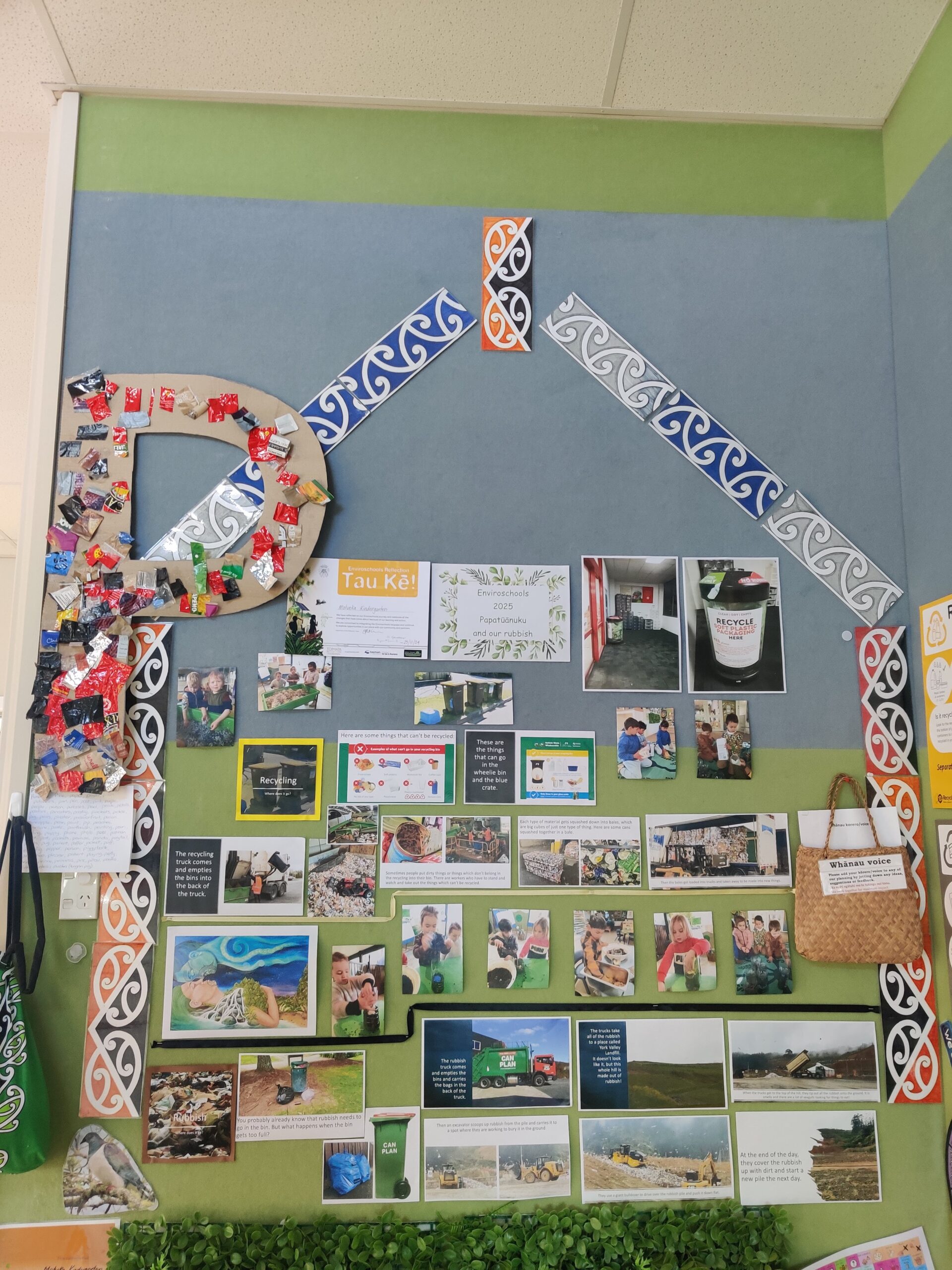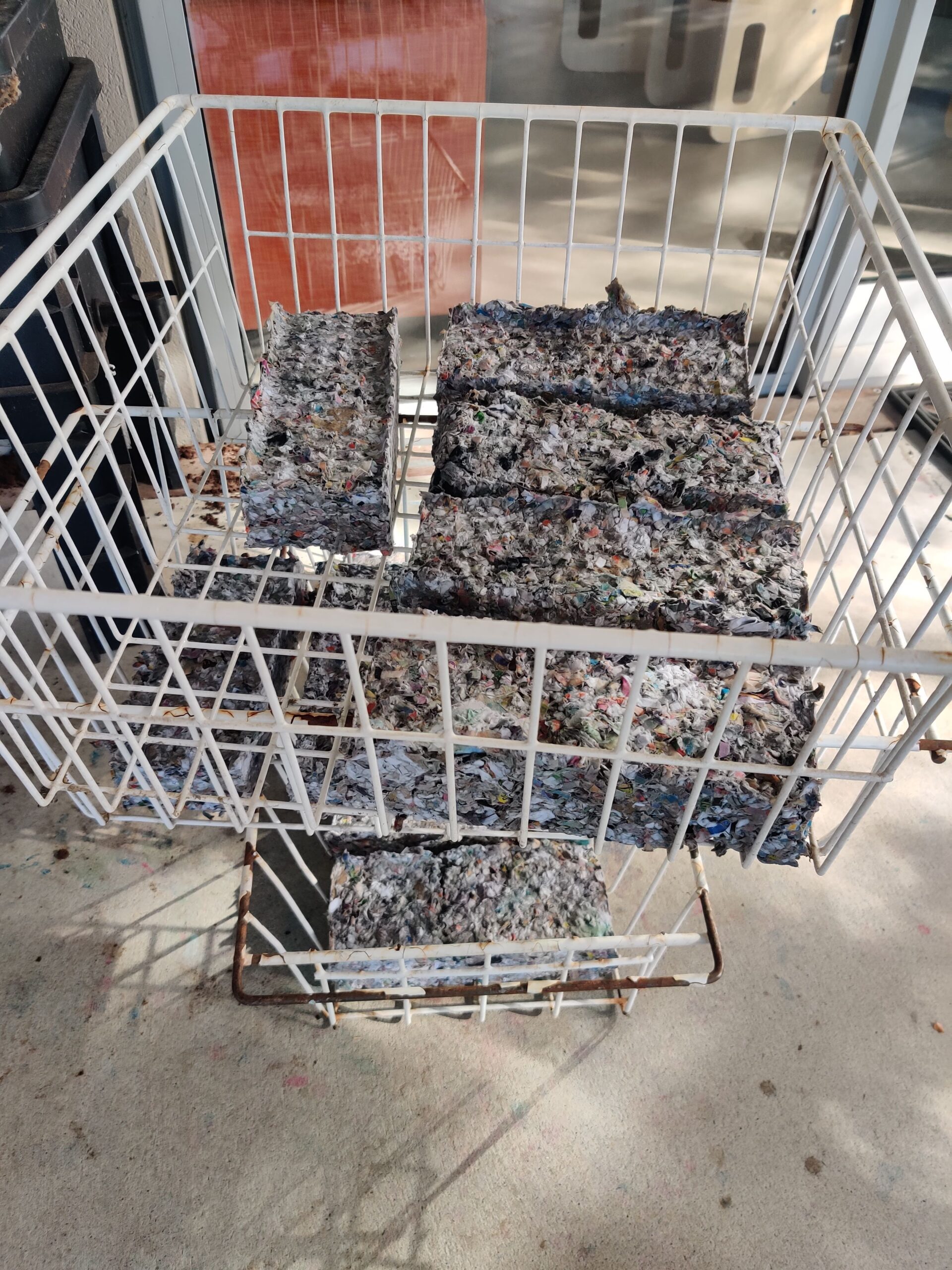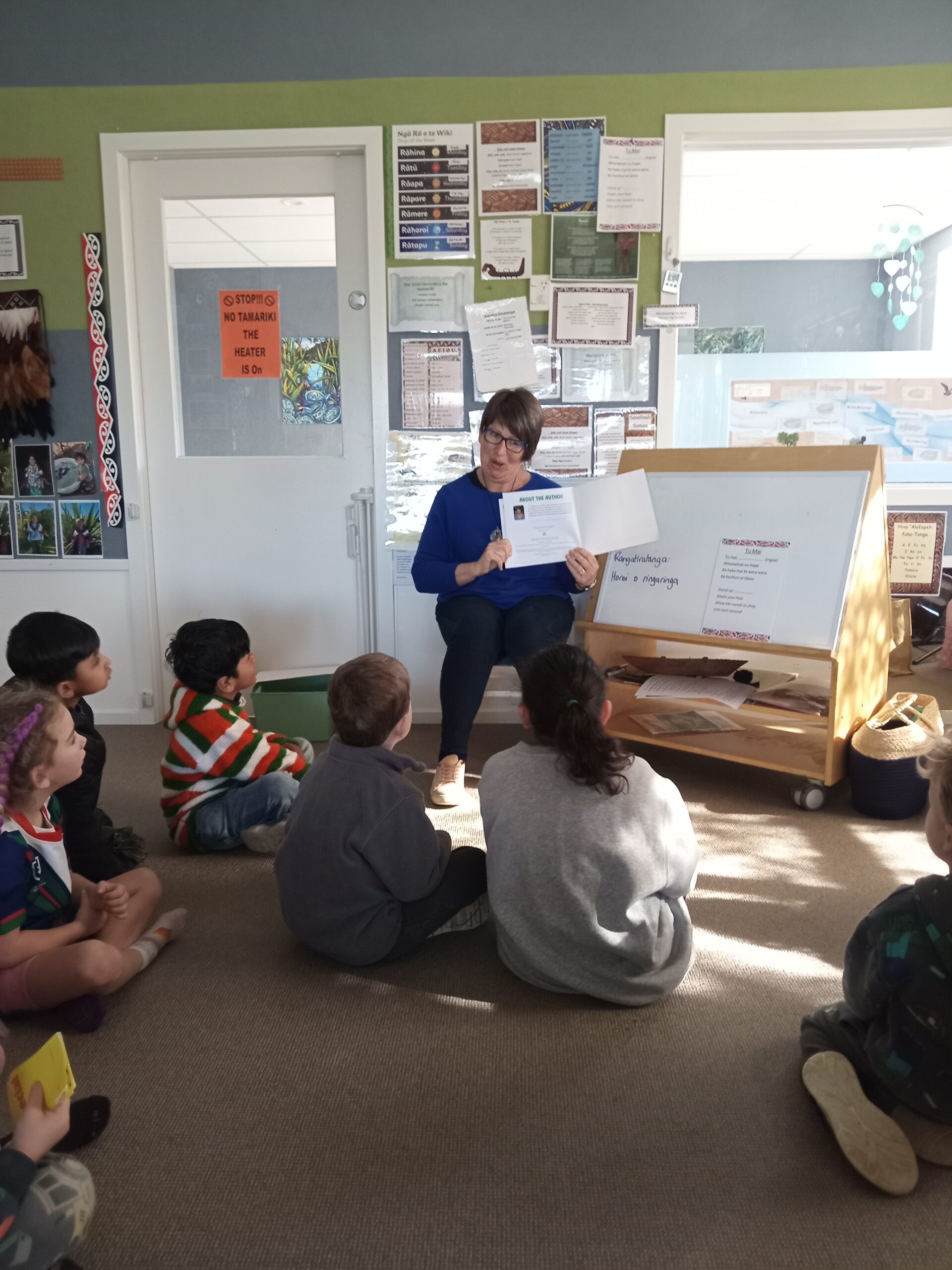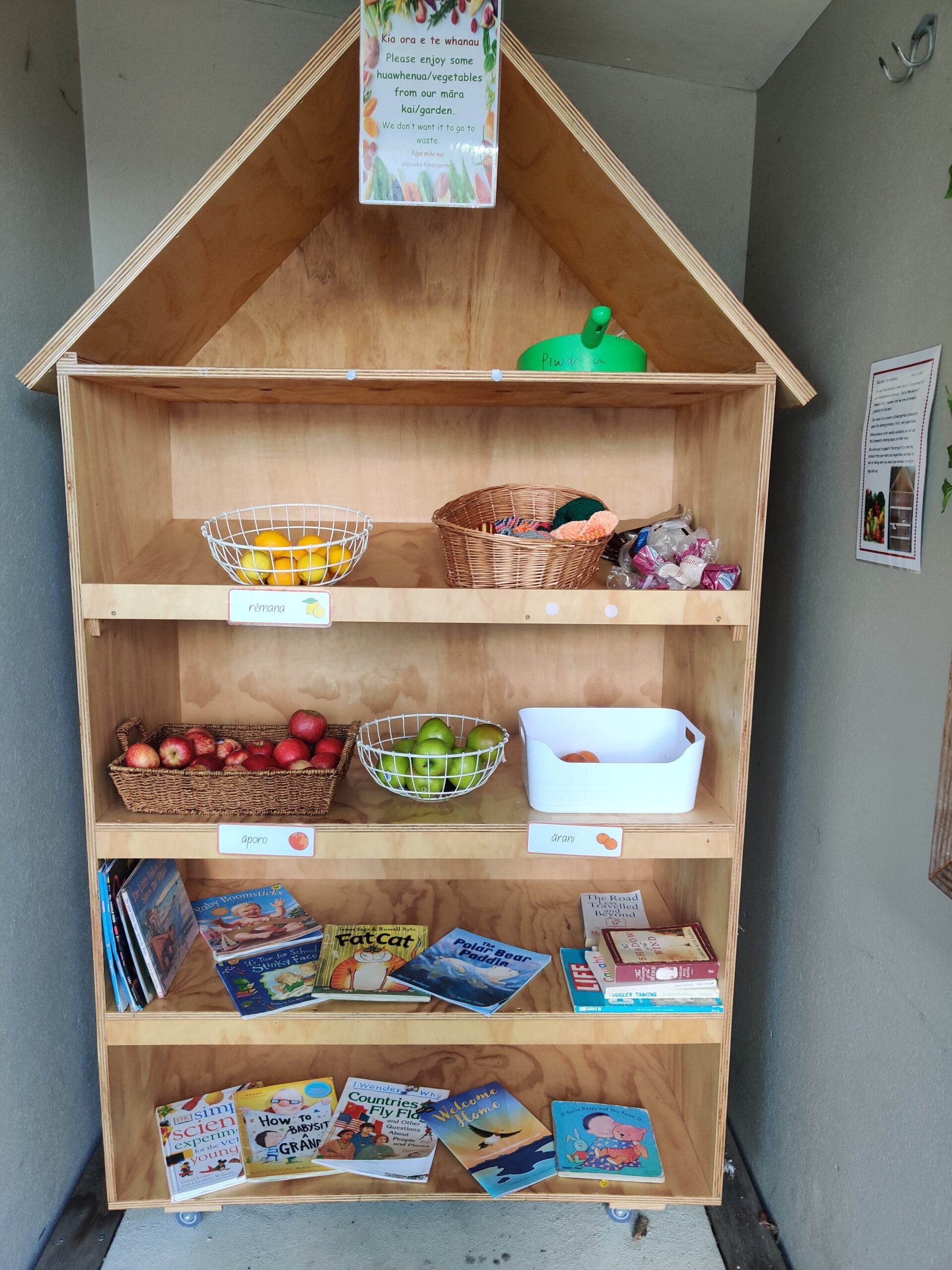Motueka Kindergarten have been taking a deep dive into rubbish and recycling – thankfully not literally, but they have been taking a closer look at all kinds of waste, thinking about questions like where it comes from, what happens to it next, impacts on our world, what alternatives there are, and what actions they can take that will make a difference.

What happens to our waste?

Drying paper bricks
Some of the activities they have explored to support tamariki’s understanding around waste include: paper brick making with all paper waste (these bricks are then shared with whānau as resources for fire-lighting), composting and worm farming for all food waste (they have also experimented with adding some of their paper hand towels to compost and worm farms), collecting waste and doing a waste audit together – looking at what is being thrown away, why and whether there are alternatives.
Tamariki have been learning about the process of recycling, where rubbish goes and what happens when it is put in a landfill, and some of the ways that they can be mindful of producing less waste, such as being mindful of toys and resources as being precious, taking care of them and making sure not to waste consumable resources such as paper. They have the opportunity to observe first hand what happens to food waste, paper, different plastics and other materials when buried through a shared science experiment with each material buried in soil in clear containers which the children can easily observe and check regularly (see banner photo).
Atua and pūrākau are central to children’s learning at Motueka Kindergarten, and narratives around attitudes of care and respect toward ngā atua and their realms are well understood by tamariki. They have particularly connected to the beautiful book ‘Papatūānuku has a Tummy Ache’ by A J Copping and even arranged a visit from the author to extend children’s interest here.

Not only are the kindergarten tamariki and kaiako on a learning journey, but their community as well. A culture of sharing, re-using and redistribution of excess kai and other resources is encouraged through a Community Sharing Space at the entrance to the kindergarten. Some other initiatives include regular yoghurt making at kindergarten, where whānau are invited to send along a re-usable container for tamariki to fill with fresh yoghurt each week and promotion of waste free lunch boxes and a range of alternatives to packaged goods.

Author A J Copping reads her book to tamariki

Community sharing space
Reflecting on their Enviroschools journey and her own understandings around it, kaiako Michelle commented:
“Having an Enviroschools column in our planning docs makes us put an Enviroschools lens on lots of things we are doing. It is helping me to understand how it reaches into lots of areas. I started with the understanding that Enviroschools is all about gardening and rubbish, but I am starting to see how it reaches into other areas, and out into our community as well” – Michelle, kaiako.
